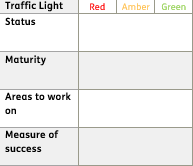A ridged technical architecture need not be a bottleneck to growth.
Your technical architecture can be a significant bottleneck. Even if your platform can support growing user or transaction volumes. There is a major challenge in maintaining flexibility as your platform matures.
It’s a real fine art of building something within your current financial means of a scale-up AND having the flexibility and agility to grow.
It is a challenge to find a balance but ignoring it is worse still. Ways we typically look at this problem is to consider identifying priorities, by asking the following questions.
1. Identify can-do-all technologies
Where in your product architecture are you experiencing the most pain? Start here, typically there is a can-do-all technology in place or an architecture that got you up and running fast at the expense of flexibility. You liked the fancy sales presentation but things now feel ridged. This is time to balance the three themes of all-in-one, best of breed and custom-build for uniqueness. Each has its benefits, and each company is unique in deciding which elements of the business are best served by which type of product.
2. Review your technology roadmap
When last did you review your technology roadmap against your customer needs, and are you doing this regularly? This needs to be regularly enough to find small technical bottlenecks before they become big technical problems. This is an element of continuous improvement and agility.
3. Have a review process in place
Embrace change as a natural pursuit. Many businesses just give up evolving their technology and decisions ossify. A regular technology review process as part of building the product backlog balances the development of customer visible functionality with invisible architectural changes that provide scale, resilience and security.
4. Balance flexibility
Where are you using packaged software? And where do you have control? The challenge with packaged software is that the supplier has complete control and if they don’t respond to the market or have a clear roadmap you can be restricted in where your business goes. It is best directed to commodity services for the business (e.g. human resources, some technical components and standards). Bespoke software gives more control – particularly to allow uniqueness and flexibility. However this also needs to be managed so that developers don’t just build commodity components, because they can, not restrict the business with out of date development elements.
5. Call on good product and technology expertise
Good product management is someone who understands your product vision, how you make revenue and can put a plan together that gets you there. They would have a level of technical expertise, but just enough to understand the problem. They need to sit firmly in the product space not the technology space.
Good technology management is someone who can work with your product manager to create a technology target architecture and has a technical plan to deliver against the product roadmap.
One way of achieving this is to grow permanent experience in house and call on deep expertise to work part time, alongside your team.
6. Making this happen
One of the key elements of making this happen is to know that your chief technology officer (CTO) is constantly reviewing your technical architecture against your product roadmap.
- Have a set of workshops to work through the above questions together with your CTO and product manager
- Identify a set of architecture design principles that are important for example flexibility, scalability, security etc.
- Draw out what changes need to be made to your technical architecture to meet the requirements of the product roadmap and what changes are needed to meet your new architecture design principles.
- Create a technology roadmap in line with these changes
- Have a process in place, at least every month that reviews this plan against your architectural design principles and what has been achieved.
- If you have a vendor, ask them to provide a regular update of upcoming product changes in advance, so you know what’s coming.
Another way is to have a simple overview of the business and our Quick Business Checkpoint tool, that puts a simple overview of the business on one page with the initiatives, measures and current maturity in one place. It gives the leadership a snapshot to know where the gaps and focus might be.


